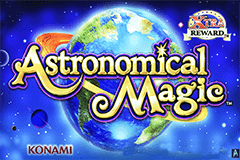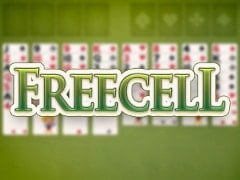Freecell Casino Game
If there’s one problem with 7 Solitaire (or Klondike, or just plain solitaire to many people), it’s the fact that games are often over before they start. While it is very rare that there are absolutely no moves that can be made, games where extensive progress simply isn’t possible aren’t unheard of, and that can make the game feel a lot less about skill than luck.
That’s why many people enjoy playing Freecell as an alternative. Popularized thanks to its inclusion in many versions of Windows as a free game, this challenging single-player card game has absolutely no luck outside of its initial layout, as players can see the locations of every single card. That makes it a game of complete information in which every move can be planned with absolute certainty. That means almost every game can be won under standard rules – though only with very good play.
Spigo’s interpretation of Frecell is just like the version you’re familiar with, with one main difference: you have the ability to wager real money on your ability to finish off each round. That’s not exactly a lucrative proposition on the standard difficulty, but those very good at playing harder versions of the game can win progressively larger prizes as the number of available free slots shrinks.
Eight Piles, Zero Surprises
At the start of each game, you’ll be able to set two main options. First, you can choose whether you want to play for real money – and for how much – or if you’d like to just play a game for fun with no cash on the line. Next, you can choose the number of free cells that are available for you to use. By default, this is set at four; two, one, and zero are all also options. The lower the number, the higher the difficulty of the game.
When you click on start game, you’ll be taken into the main game screen. At the start of a round, all 52 cards from a standard deck will be randomly shuffled and placed in eight piles to make up the tableau. Four of these piles will have seven cards, and four will have six. Two other areas will currently be empty. One of these, the foundation, will be familiar to players of other solitaire games: there is one pile here for each suit, and the goal is to move all of your cards to this area by the end of the game.
The other area features the free cells that give this game its name. One care may be placed in each of these free cells; these act as holding areas for cards that you cannot currently use.
The action in Freecell is very similar to that in Klondike. Cards can be stacked on each other, but only if they follow in rank and alternative in color. For instance, a black seven may be placed on a red eight, but not on a black eight or any other card. Stacks of correctly alternative cards may also be moved. However, unlike in Klondike, there are restrictions on just how many cards you can move at once; these rules will be explained further in a moment.
As we said, the object of the game is to move all of your cards to the foundation. Each foundation pile must start with an ace, after which the next higher-ranked card of the same suit may be placed on top of it. In other words, the ace of hearts is followed by the two of hearts, then the three, and all the way up through the king. Only cards that are fully showing – those being the top card on each pile, or any card in a free cell – may be moved to the foundation.
At times, you may find that you have no legal moves, or no moves that you wish to make. In those cases, you may wish to make use of the free cells. Any card at the top of a tableau pile may be moved to a free cell at any time. From there, it can then be moved to any legal location when you wish to do so. In addition, it is worth noting that any card or stack may be moved to an empty pile on the tableau (unlike in 7 Solitaire, where only a king may be placed into one of these empty spots).
These two rules are key to understanding how many cards in a legal stack can be moved at once. At a minimum, you can always move a stack equal to the number of unoccupied free cells plus one – as you could manually do the same by moving each card individually. For instance, if you have two cells open, you could potentially place the first two cards there, move a third card to its new location, then put the two cards you stored in the free cell area back into the new pile. In addition, empty piles act as a multiplier on this ability: if you have one empty pile, you can now double the size of the stack you can move, while two such spaces will let you triple your move size. If you don’t have any available cells, each empty pile still allows for two cards to be moved simultaneously. While all this might be a bit confusing, the Spigo version of this game won’t let you make any illegal moves, so clicking on the card you’d like to shift is enough to know whether or not you can move at that depth.
A game of Freecell can end in one of two ways. If there are no more legal moves you can make, then unfortunately, you have lost. However, if you manage to get the entire deck over to the foundation, then you’ll be declared a winner for the round. In this version of the game, that also means you’ll be awarded a prize, one that varies depending on the number of free cells that you’ve chosen to play with. The payout structure is as follows:
- Four: 1x
- Three: 1.006x
- Two: 1.15x
- One: 4x
- Zero: 350x
An Incredibly Low House Edge…With a Catch
Freecell is clearly a game that requires a lot of skill to play. Those new to the game often get frustrated after losing deal after deal, but solid players will win 90% of their deals that feature four free cells, and the best players can win over 99%. In fact, with perfect play, the winrate for basic Freecell is somewhere around 99.999%, with only about 1 in 71,000 possible deals being unsolvable when tested by computer programs. In fact, just one deal of 32,000 in the original Microsoft version of the game was unsolvable (which caused plenty of headaches for solvers back in the day).
A game that is winnable at such a high percentage might seem like a bad idea for a casino to offer to its players. But if you’re questioning why they let you play this version for real money, here’s the answer: it’s literally impossible to come out ahead on this game in the long run. The game only pays out at exactly your stake when you win, meaning the best you can do is break even. That means that while the house edge is an incredibly low 0.001% with perfect play, it’s also literally impossible to beat the house!
That doesn’t necessarily mean that it is impossible to make a small amount of money playing this version of the game, however. Like all Spigo games, random jackpots are sometimes awarded to players between rounds, as are some smaller prizes. Technically, you could keep solving four-cell games for hours on end, never winning or losing any money, but winning a small amount here or there in the jackpot game. It’s not exactly the most entertaining way to gamble, but who are we to judge?
Playing with fewer freecells is also an option, though the house tries to keep an edge based on the known (or estimated) odds of winning in each case. Somewhere around 99% of all deals can be done with three freecells, enough to give you about a 99.5% return to player. A significant number of deals only become unsolvable when you reduce the number of cells to two; at that point, estimates tend to be around 80% for the percentage of solvable layouts, and Spigo estimates the RTP at just 91.45%.
While making the game even harder increases the payouts dramatically, they also make the house edge extremely high, even if you play absolutely perfectly. Getting 350 times your stake for winning a game with no freecells might be a thrilling proposition, but don’t be fooled: only somewhere around one in 464 games can be solved under these rules, making the return to player somewhere around 75-77% (depending on whose estimates you use).
More Fun with Money on the Line
Freecell has long been one of the more popular time-wasting activities for procrastinators around the world. However, there hasn’t always been the opportunity to play this fascinating game with the opportunity to win prizes. It turns out that this makes the game very engaging, and very rewarding to play once you become skilled at solving these puzzles.
Sure, the opportunities to win money here are very limited: you can go for a jackpot in the unlikely event of winning a deal with zero cells, or you can grind for jackpots in the easiest form of the game. But even if this isn’t a game that will get you rich anytime soon, Freecell remains an extremely fun and entertaining game to play. If you’ve always enjoyed playing this on your computer, you might find that risking a small amount of money on the outcome of each game is a lot of fun with relatively little risk – something that sounds like a good time in our book.











































